Intel Core i7 3960X (Sandy Bridge E) Review: Keeping the High End Alive
by Anand Lal Shimpi on November 14, 2011 3:01 AM EST- Posted in
- CPUs
- Intel
- Core i7
- Sandy Bridge
- Sandy Bridge E
No Integrated Graphics, No Quick Sync
All of this growth in die area comes at the expense of one of Sandy Bridge's greatest assets: its integrated graphics core. SNB-E features no on-die GPU, and as a result it does not feature Quick Sync either. Remember that Quick Sync leverages the GPU's shader array to accelerate some of the transcode pipe, without its presence on SNB-E there's no Quick Sync.
Given the target market for SNB-E's die donor (Xeon servers), further increasing the die area by including an on-die GPU doesn't seem to make sense. Unfortunately desktop users suffer as you lose a very efficient way to transcode videos. Intel argues that you do have more cores to chew through frames with, but the fact remains that Quick Sync frees up your cores to do other things while SNB-E requires that they're all tied up in (quickly) transcoding video. If you don't run any Quick Sync enabled transcoding applications, you won't miss the feature on SNB-E. If you do however, this will be a tradeoff you'll have to come to terms with.
Tons of PCIe and Memory Bandwidth
Occupying the die area where the GPU would normally be is SNB-E's new memory controller. While its predecessor featured a fairly standard dual-channel DDR3 memory controller, SNB-E features four 64-bit DDR3 memory channels. With a single DDR3 DIMM per channel Intel officially supports speeds of up to DDR3-1600, with two DIMMs per channel the max official speed drops to 1333MHz.
With a quad-channel memory controller you'll have to install DIMMs four at a time to take full advantage of the bandwidth. In response, memory vendors are selling 4 and 8 DIMM kits specifically for SNB-E systems. Most high-end X79 motherboards feature 8 DIMM slots (2 per channel). Just as with previous architectures, installing fewer DIMMs is possible, it simply reduces the peak available memory bandwidth.
Intel increased bandwidth on the other side of the chip as well. A single SNB-E CPU features 40 PCIe lanes that are compliant with rev 3.0 of the PCI Express Base Specification (aka PCIe 3.0). With no PCIe 3.0 GPUs available (yet) to test and validate the interface, Intel lists PCIe 3.0 support in the chip's datasheet but is publicly guaranteeing PCIe 2.0 speeds. Intel does add that some PCIe devices may be able to operate at Gen 3 speeds, but we'll have to wait and see once those devices hit the market.
The PCIe lanes off the CPU are quite configurable as you can see from the diagram above. Users running dual-GPU setups can enjoy the fact that both GPUs will have a full x16 interface to SNB-E (vs x8 in SNB). If you're looking for this to deliver a tangible performance increase, you'll be disappointed:
| Multi GPU Scaling - Radeon HD 5870 CF | |||||
| Max Quality, 4X AA/16X AF | Metro 2033 (19x12) | Crysis: Warhead (19x12) | Crysis: Warhead (25x16) | ||
| Intel Core i7 3960X (2 x16) | 1.87x | 1.80x | 1.90x | ||
| Intel Core i7 2600K (2 x8) | 1.94x | 1.80x | 1.88x | ||
Modern GPUs don't lose much performance in games, even at high quality settings, when going from a x16 to a x8 slot.
I tested PCIe performance with an OCZ Z-Drive R4 PCIe SSD to ensure nothing was lost in the move to the new architecture. Compared to X58, I saw no real deltas in transfers to/from the Z-Drive R4:
| PCI Express Performance - OCZ Z-Drive R4, Large Block Sequential Speed - ATTO | ||||
| Intel X58 | Intel X79 | |||
| Read | 2.62 GB/s | 2.66 GB/s | ||
| Write | 2.49 GB/s | 2.50 GB/s | ||
The Letdown: No SAS, No Native USB 3.0
Intel's current RST (Rapid Story Technology) drivers don't support X79, however Intel's RSTe (for enterprise) 3.0 will support the platform once available. We got our hands on an engineering build of the software, which identifies the X79's SATA controller as an Intel C600:
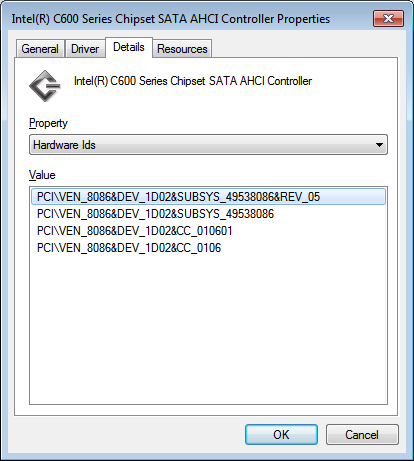
Intel's enterprise chipsets use the Cxxx nomenclature, so this label makes sense. A quick look at Intel's RSTe readme tells us a little more about Intel's C600 controller:
SCU Controllers:
- Intel(R) C600 series chipset SAS RAID (SATA mode)
Controller
- Intel C600 series chipset SAS RAID ControllerSATA RAID Controllers:
- Intel(R) C600 series chipset SATA RAID ControllerSATA AHCI Controllers:
- Intel(R) C600 series chipset SATA AHCI Controller
As was originally rumored, X79 was supposed to support both SATA and SAS. Issues with the implementation of the latter forced Intel to kill SAS support and go with the same 4+2 3Gbps/6Gbps SATA implementation 6-series chipset users get. I would've at least liked to have had more 6Gbps SATA ports. It's quite disappointing to see Intel's flagship chipset lacking feature parity with AMD's year-old 8-series chipsets.
I ran a sanity test on Intel's X79 against some of our H67 data for SATA performance with a Crucial m4 SSD. It looks like 6Gbps SATA performance is identical to the mainstream Sandy Bridge platform:
| 6Gbps SATA Performance - Crucial m4 256GB (FW0009) | ||||||
| 4KB Random Write (8GB LBA, QD32) | 4KB Random Read (100% LBA, QD3) | 128KB Sequential Write | 128KB Sequential Read | |||
| Intel X79 | 231.4 MB/s | 57.6 MB/s | 273.3 MB/s | 381.7 MB/s | ||
| Intel Z68 | 234.0 MB/s | 59.0 MB/s | 269.7 MB/s | 372.1 MB/s | ||
Intel still hasn't delivered an integrated USB 3.0 controller in X79. Motherboard manufacturers will continue to use 3rd party solutions to enable USB 3.0 support.


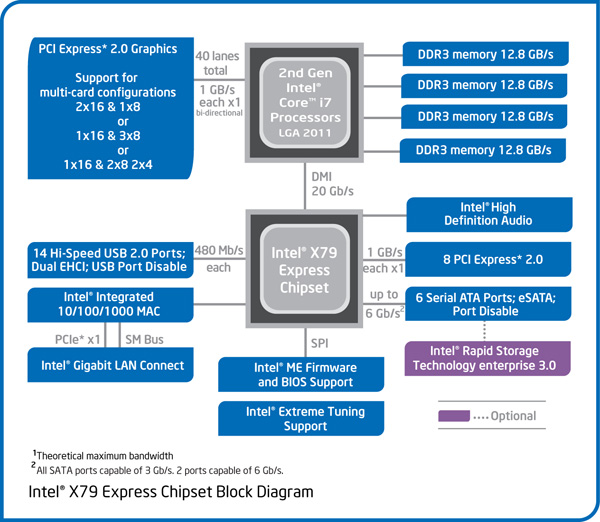
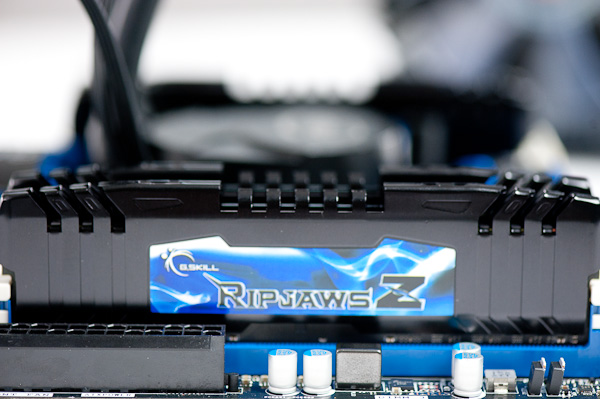
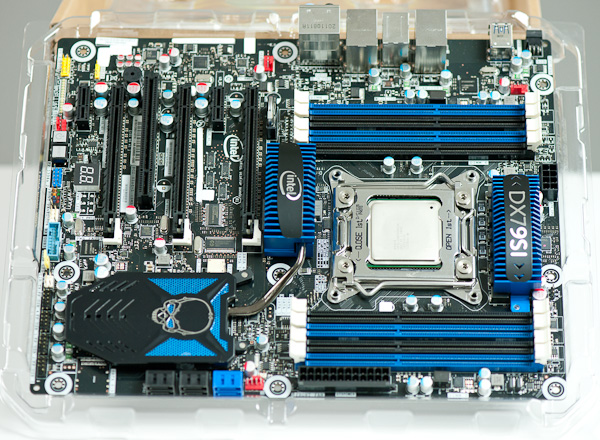
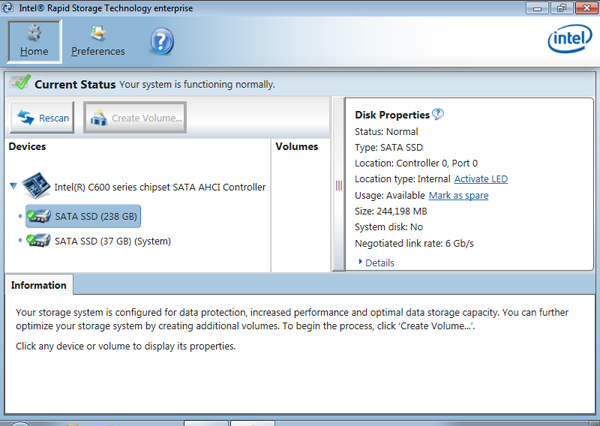








163 Comments
View All Comments
yankeeDDL - Monday, November 14, 2011 - link
That's what I was doing: blaming AMD. Intel is doing what any company that is interested in making money/profit would do.yankeeDDL - Monday, November 14, 2011 - link
Sorry ... I replied to the wrong post :) I meant to hit the one below!JlHADJOE - Tuesday, November 15, 2011 - link
If you compare it to the extreme edition chip, then Bulldozer looks like good value. But then the 3960X is a halo model for those people who care nothing about price.Considering the 3930K gives you 95% the performance of the 3960X for 50% of the price (see xbitlabs), there's really no reason to get the X-edition chip unless you are building a system purely for bragging rights.
Now when compared to the 3930K, the FX8150 doesn't look nearly as good. If we consider total platform costs with either system having a $300 motherboard and $200 in ram, then we're looking at something in the region of $750 for BD, vs $1000 for the SB-E. +$250 is small change for double the performance at a similar power envelope.
yankeeDDL - Tuesday, November 15, 2011 - link
JIHADJOE, yes, that was my point.The 3960X is -arguably- the fastest CPU available, but it is faster by a tiny margin, while being radically more expensive than anything else.
So yes, nothing looks as bad in terms of price/performance ratio, not even the FX8150. And that's, basically, bad for everyone (except Intel)
actionjksn - Monday, November 14, 2011 - link
I agree too AMD's poor Bulldozer performance is having a huge effect on what we can get from Intel and at what price. And I blame AMD not Intel, because Intel or any other company is supposed to do what's best for their company. Heck if Intel did what we want they would probably cause serious harm to AMD. Because it would make AMD even less competitive. And I don't think Intel really wants to put AMD out of business.yankeeDDL - Monday, November 14, 2011 - link
That's what I was doing: blaming AMD. Intel is doing what any company that is interested in making money/profit would do.GeorgeH - Monday, November 14, 2011 - link
One of the bigger advantages of this platform to me is the 8 DIMM slots. However it was rumored that the first revision of SB-E had/has VT-D problems, which spoils things a little bit as VMs are one of the bigger reasons for lots of RAM. Can you confirm or deny if there are VT-D issues?Anand Lal Shimpi - Monday, November 14, 2011 - link
VT-d is supported, checking to see if there are any functional issues now.Take care,
Anand
GeorgeH - Monday, November 14, 2011 - link
ArsTechnica is reporting that VT-D is broken, but they don't cite any sources. A short article explaining what VT-D is for those who don't know and what (if anything) is broken might be in order.Filiprino - Monday, November 14, 2011 - link
That thing is really big!As for Quick Sync, it's not really useful. If you want quality you'll have to use x264, and with lower qualities x264 has some presets that are near as fast as Quick Sync.
The winner combo is LGA2011+Kepler/Souther Islands.
If you have a hole in your pocket you can throw in a dual socket motherboard, some liquid cooling and a big SSD.